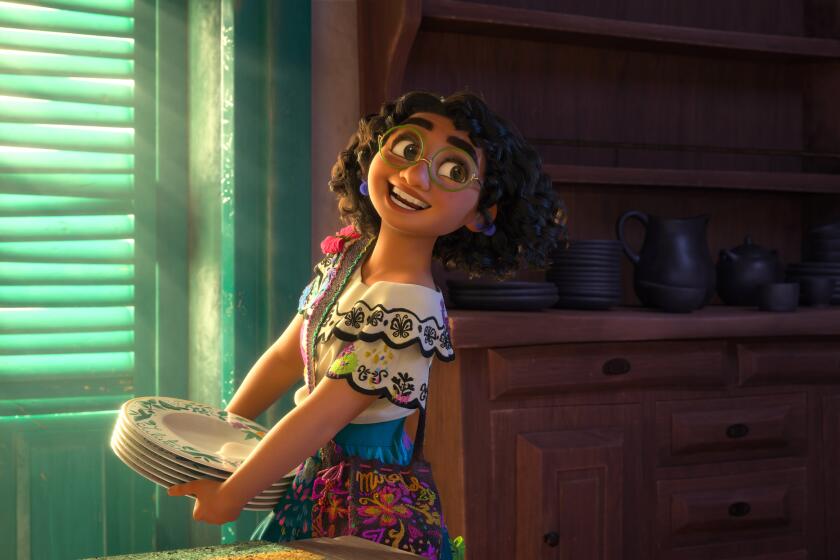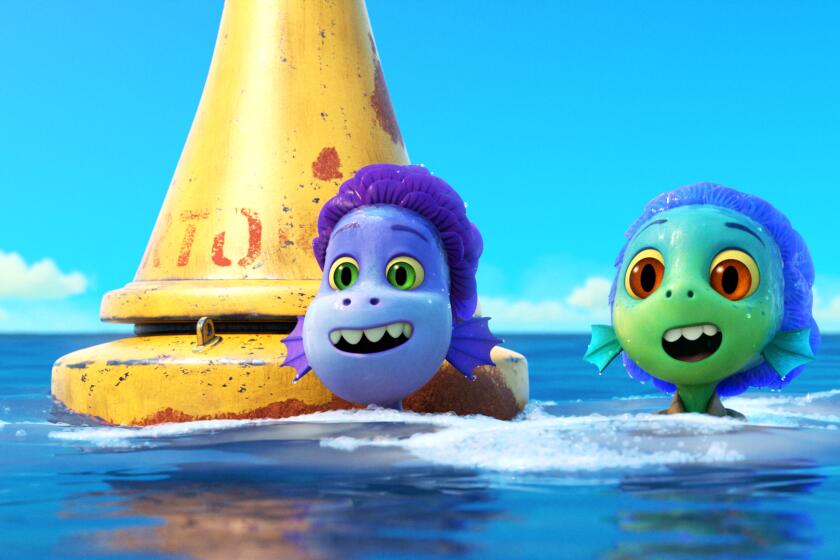‘Encanto’ is Disney’s first Latino musical. How the filmmakers got Colombia right
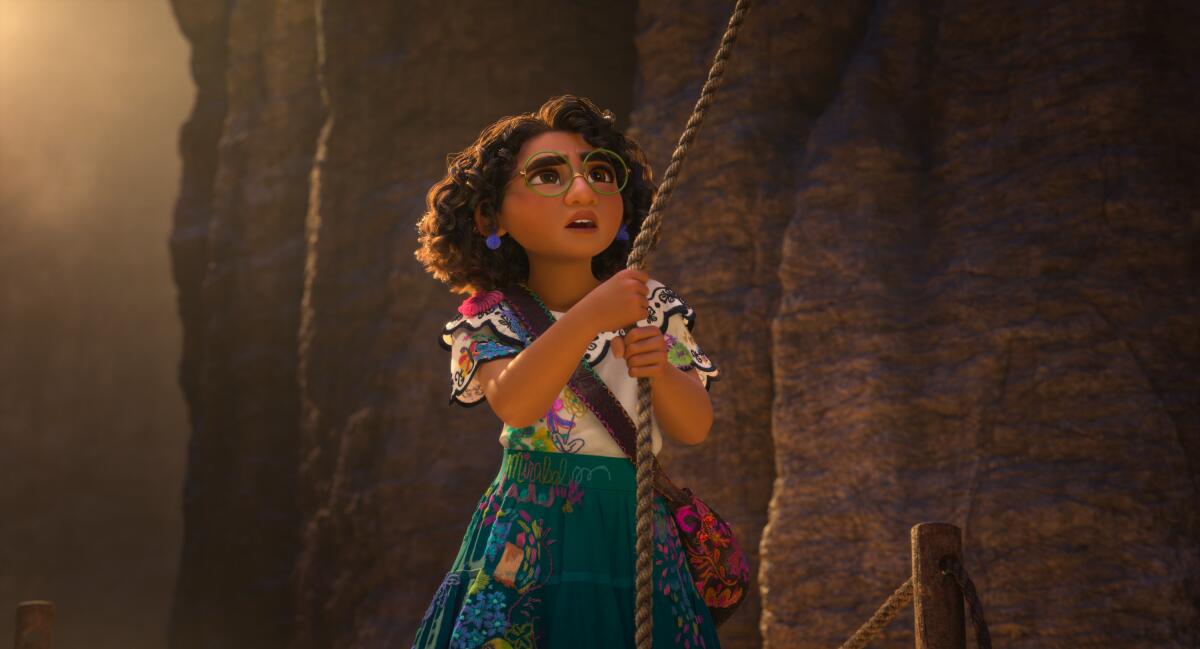
Everyone born into the Madrigal family is fantastical and magical. Well, almost everyone.
Directed by Jared Bush and Byron Howard, Walt Disney Animation Studios’ “Encanto,” which topped the Thanksgiving weekend box office in its theatrical exclusive release, follows Mirabel — the only member of her family who was not bestowed a magical ability upon her fifth birthday — as she figures out that she doesn’t need a special gift to be extraordinary.
It’s not an easy lesson to learn when one grows up surrounded by sisters and cousins who can use their unique gifts to help their village prosper. But just as Mirabel isn’t defined by her lack of magic, she also comes to realize these powers bring her family members their own struggles too.
Members of the Madrigal family and their gifts are built on familiar archetypes. Mirabel’s older sister Luisa is the strong one, so her gift is super strength that allows her to lift everything from donkeys to buildings. Her oldest sister Isabela is the golden child, so flowers bloom with every step she takes. And their nurturing mother Julieta cooks food that can heal actual ailments.
‘Encanto,’ Disney’s newest animated musical, spins a tale of a Colombian family with magical powers and features songs by Lin-Manuel Miranda.
“My hope is that everybody can see some member of their family reflected in this,” said co-director Charise Castro Smith, who wrote the “Encanto” screenplay with Bush. “We really tried to build it from a foundation of these family archetypes that are immediately relatable. And then, because the film is about perspective and seeing deeper, [it’s about] moving past [the archetypes] and seeing that people in our families are more complex than these masks we put on them.”
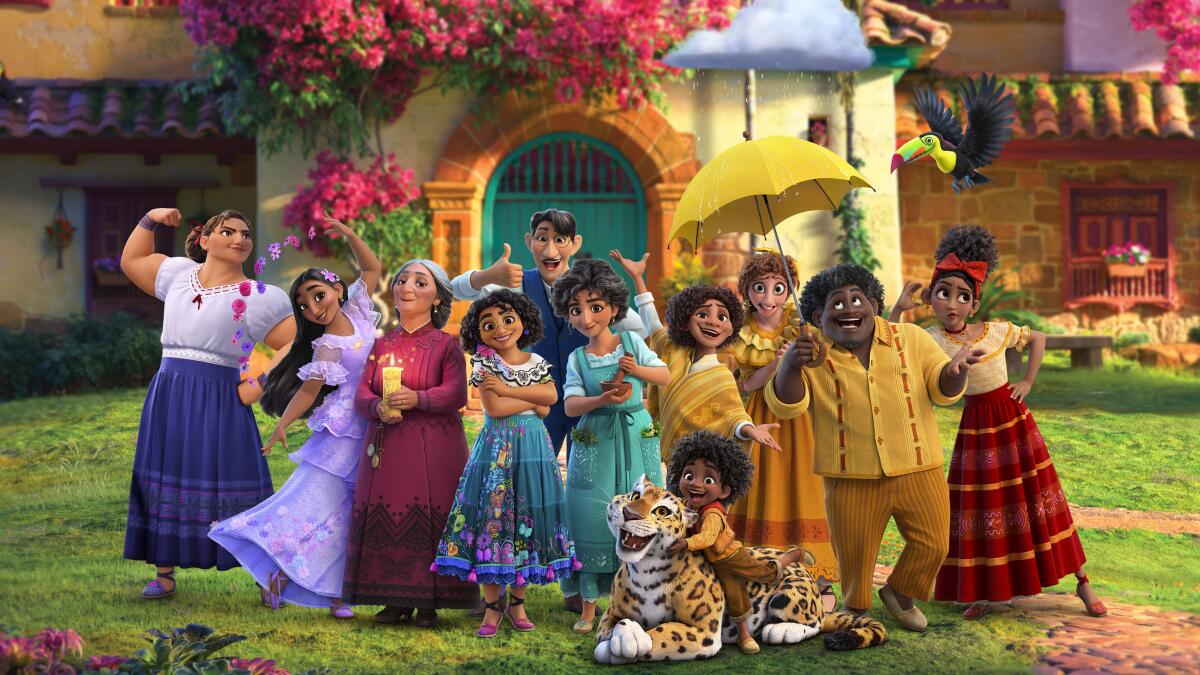
The desire to tell a story about different perspectives within a family was one of the elements that pushed the filmmakers to set “Encanto” in Colombia, a South American country with deep Indigenous, European and African cultural roots.
After working together on 2016’s “Zootopia,” Howard and Bush knew they wanted their next project together to be a musical. Bush had also previously worked with Lin-Manuel Miranda on “Moana” (2016). And from their earliest conversations, the filmmakers knew they shared a desire to tell a story featuring an extended family.
“Lin was very keen to do the definitive Latin American musical,” said Howard. “But none of us knew where it should be set, exactly, because Latin America is huge. … We needed to find the perfect place and all roads kept pointing toward Colombia, which is this incredible crossroads of Latin American culture, of ethnicity, of traditions in food and dance. The families themselves are incredibly diverse and that’s embraced in a way that we absolutely loved.”
“Luca” director Enrico Casarosa and character art director Deanna Marsigliese on sea monster inspiration, design, transformation and more. The Pixar film hits Disney+ on June 18.
Colombia also has a rich tradition of magical realism — where magic is just a facet of everyday reality — and it offered the filmmakers a way to heighten the familiar family dynamics they wished to explore through a magic not yet seen in Disney films.
The Madrigals’ powers are “a natural extension of these archetypes that we know very well, told in this tradition that’s tied to the country in which [the story is] set,” said Bush. It “also allows us at Disney to use a type of magic that we’ve never done before — a magic born of emotion and personality and character. It was just really exciting to play in that realm.”
Another nudge toward Colombia came through Howard and Bush’s relationship with filmmakers Juan Rendon and Natalie Osma, who had worked on the “Zootopia” documentary “Imagining Zootopia.”
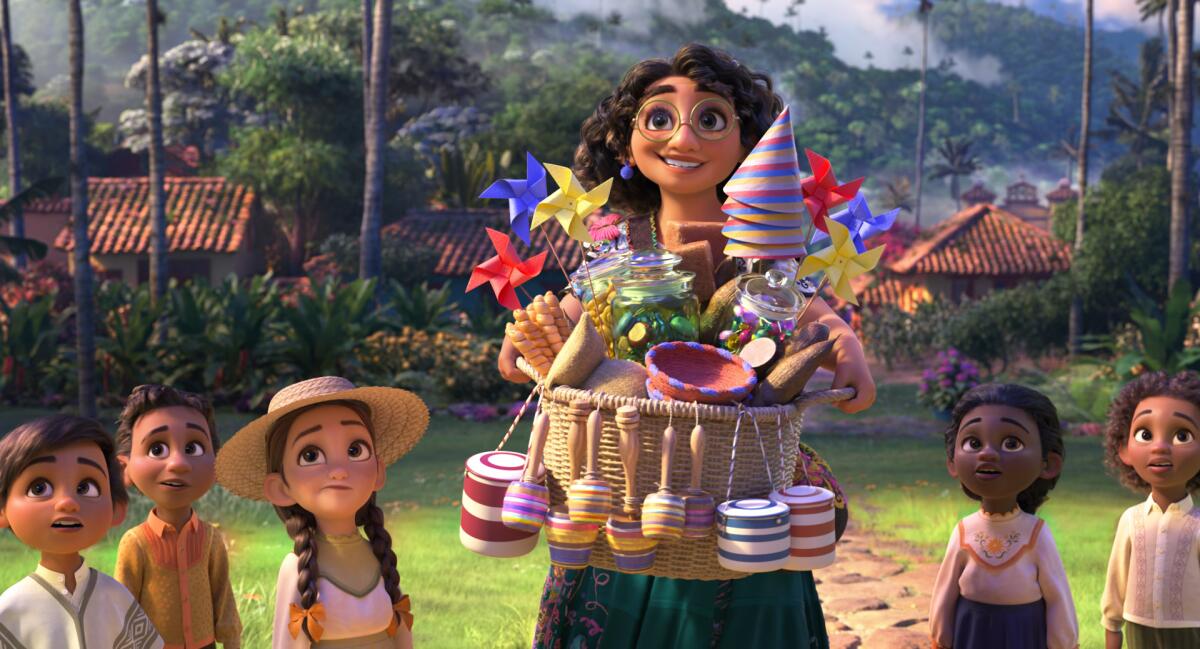
“They told us about this vague idea that they had at the beginning and then they asked us to … sit with [them] and talk about Latin American culture,” said Osma. The conversations started off broadly, but “day by day it started getting more specific. We’re Colombian, so, of course, we were always giving examples of Colombia.”
“It really just felt like all the pieces started falling together,” said Howard. So “you go, ‘This is what this movie is saying it needs to be,’ and you absolutely embrace it.”
For “Encanto,” embracing Colombia involved doing proper research and bringing on consultants with various expertise into the process. Rendon and Osma, who accompanied Howard, Bush and Miranda for parts of their research trip to Colombia, served as the film’s primary consultants.
“We went with them to Bogotá and Cartagena,” said Rendon, where they introduced the filmmakers to people “who could help them understand the idiosyncrasies and the magic of Colombia. ... We wanted to highlight certain aspects of the country that we thought were important to be portrayed in the film.”
This meant facilitating conversations with architects, who could speak to traditional materials used in Colombian architecture; chefs, to celebrate the food; and artisan groups, who could speak to the cultural significance of specific traditional crafts. The filmmakers also met with botanists to talk Colombian biodiversity and visited the Gabriel García Márquez foundation.
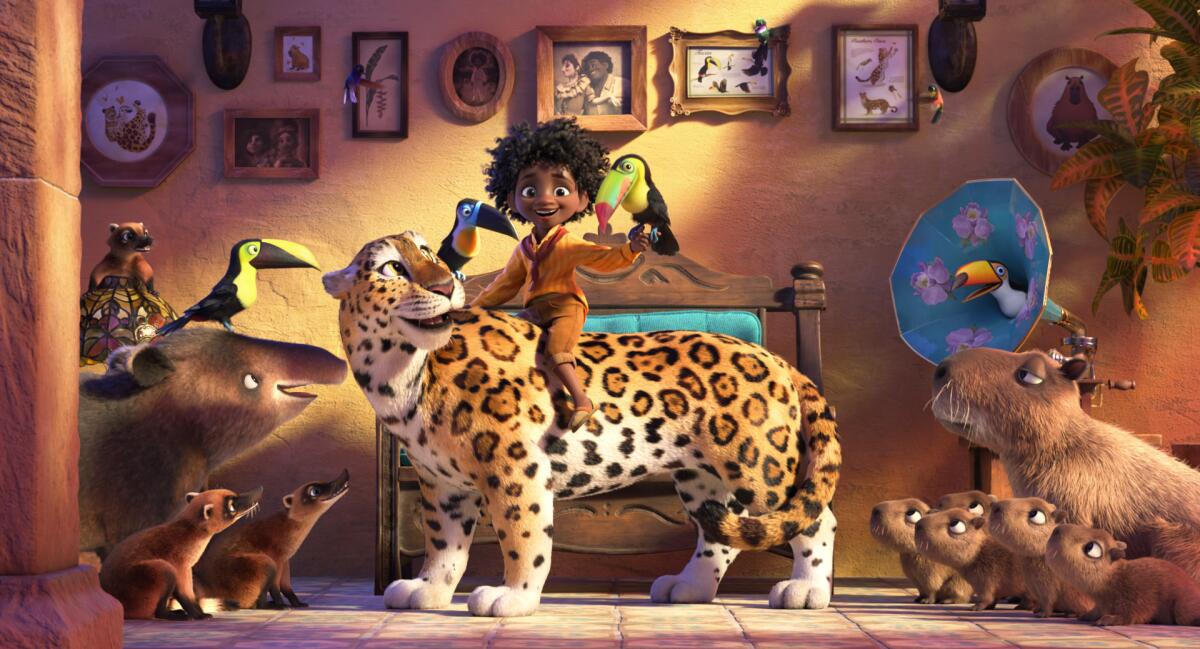
Besides an education on the country’s rich history and culture, the aim was for the filmmakers to be exposed to the day-to-day of Colombian life during this trip so “they could feel the warmth of the people” and see everyday details like “how they were dressed [and] how they feel music,” said Osma.
From the guadua (a type of bamboo) within the walls of the Madrigal’s magical casita to the villagers seen playing tejo (a cornhole-like game), “a lot of the things that we talked about and visited during that trip worked themselves into some aspects of the film,” said Rendon.
Edna Liliana Valencia, a journalist and TV news anchor who focuses on Afro-Colombian issues, added that “people will see a lot of important symbols of [Colombia’s] Black culture in the movie.”
Valencia, who consulted on the hair texture of “Encanto’s” Black characters as well as the different styles of clothes worn by the villagers to represent the clothing worn in different regions of Colombia, points to details such as the inclusion of specific instruments such as the marimba de chonta as an example of those recognizable symbols. Besides seeing Black characters with natural hair textures, she cites the incorporation of the Chocó region’s rainforest into Mirabel’s cousin Antonio’s room as among the aspects most meaningful for her.
Colombia has one of the largest Afro-descendant populations in Latin America and is comprised of many distinct cultural regions, so “I really appreciate that Walt Disney [Animation] made a very big effort to represent the diversity of the Colombian population,” said Valencia. “That’s very important to me.”
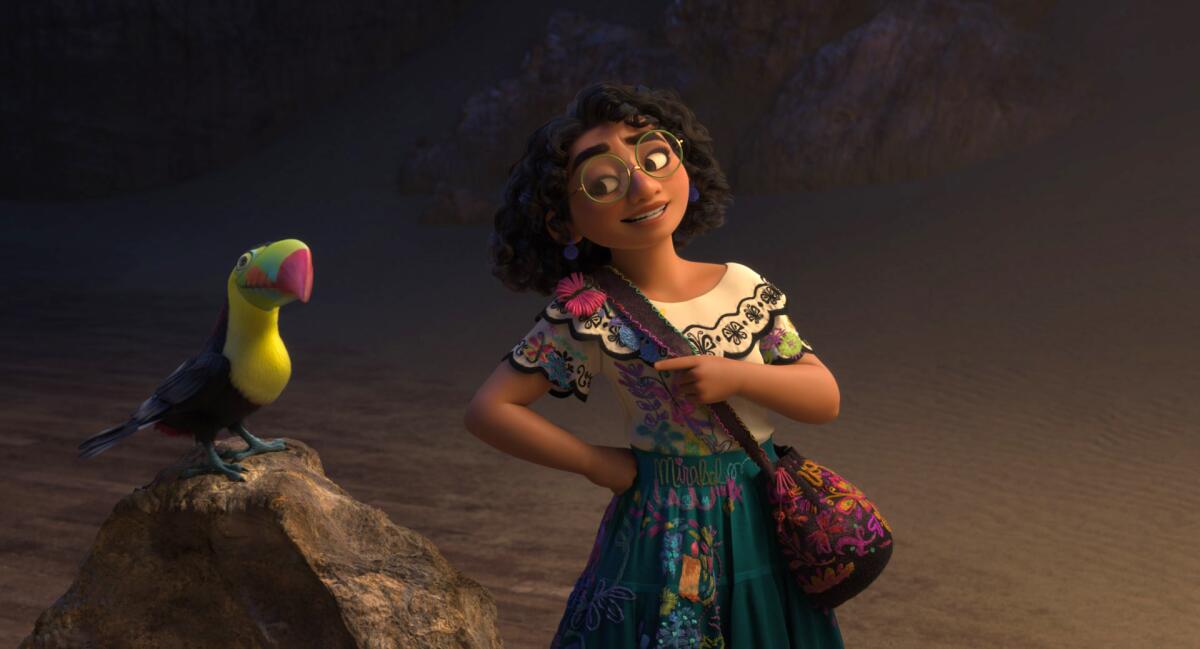
According to Howard, the only way to approach trying to represent a country as vast as Colombia in a 90-minute feature was by “look[ing] for any opportunity we could to represent diversity and ethnicity in the family, to represent the different [regions in] costumes … [and by] thinking about the tough history of the country — the resilience and the strength that formed around that with families — and really wanting to do right with that.”
But “Encanto” isn’t just about being “right on paper.”
“There’s a difference between being intellectually correct and being emotionally correct,” said Bush. “That’s something that we talked about a lot with all of our friends that we met in Colombia ... that it had to feel right. And that was something that we were really lucky to have such great partners help us with.”
The research and learning process for “Encanto” was ongoing throughout the entire duration of the production. And it was never too late to make adjustments if changes needed to be made. Besides the official consultants, the filmmakers also turned to the studio’s Latinx employees affiliated with the Familia group for feedback.
“It was this group that got together every so often and we would just talk about our experiences and share lots of different cultural touchstones,” said Castro Smith. “This group watched the film and gave us really honest feedback after every time we screened it. I think their feedback was invaluable in making this movie.”
Making “Encanto” “really was a five-year learning process,” said Howard. “We all wanted our Colombian friends to be proud of this film and to feel like they really had a true voice in making it come to life.”
More to Read
Only good movies
Get the Indie Focus newsletter, Mark Olsen's weekly guide to the world of cinema.
You may occasionally receive promotional content from the Los Angeles Times.
